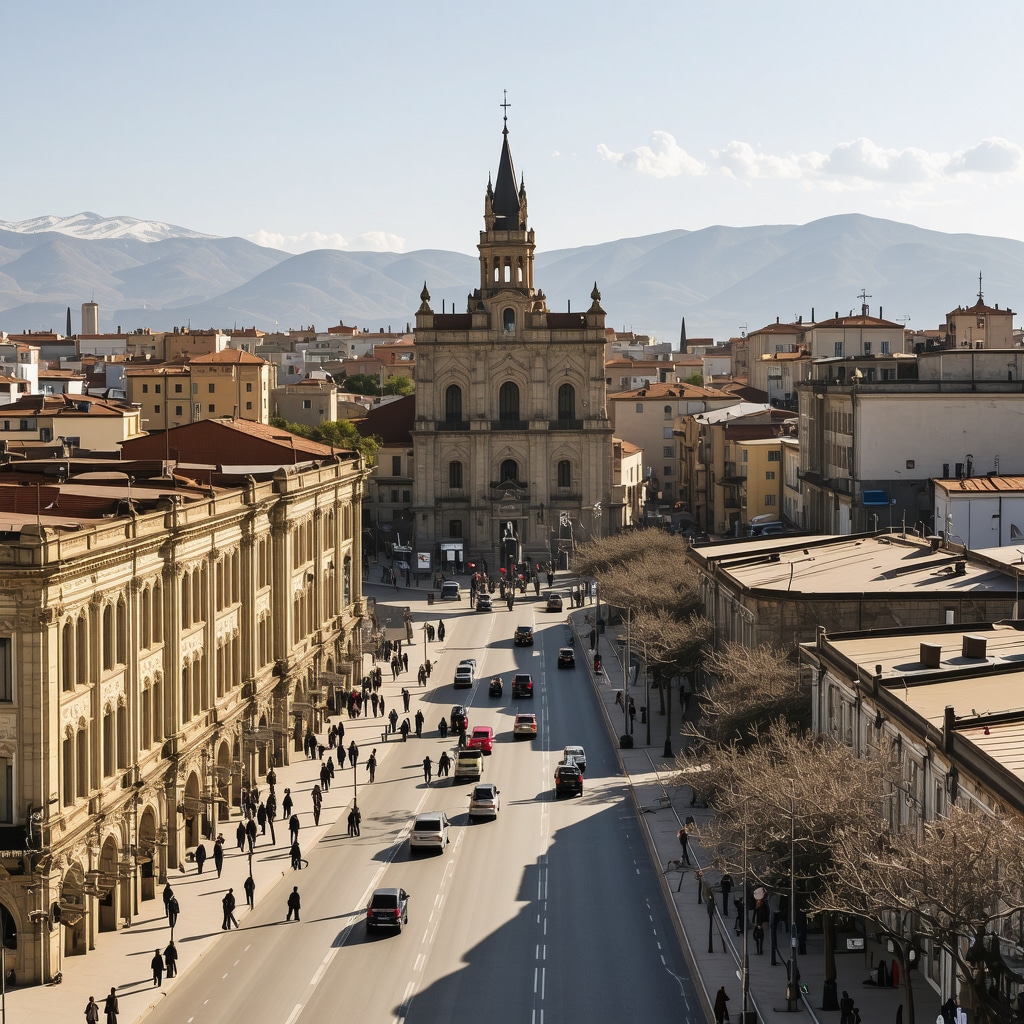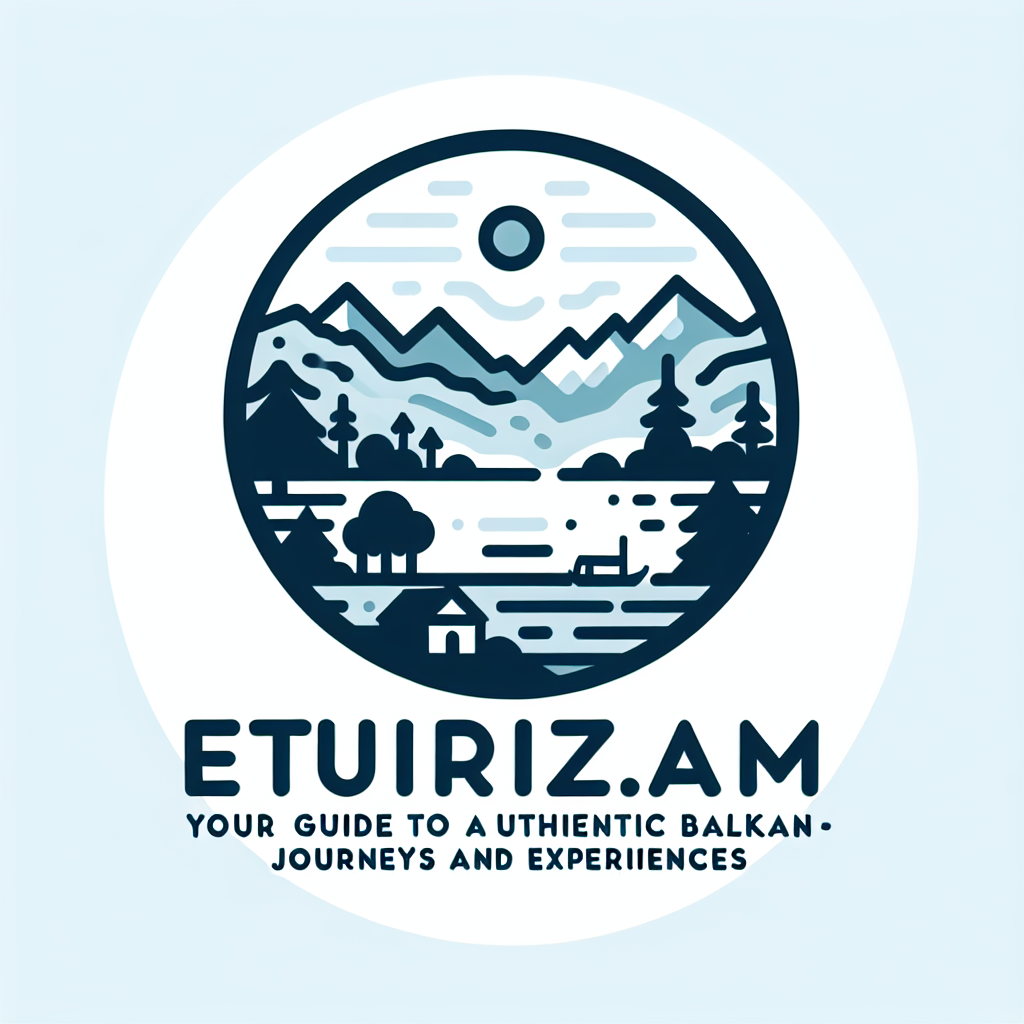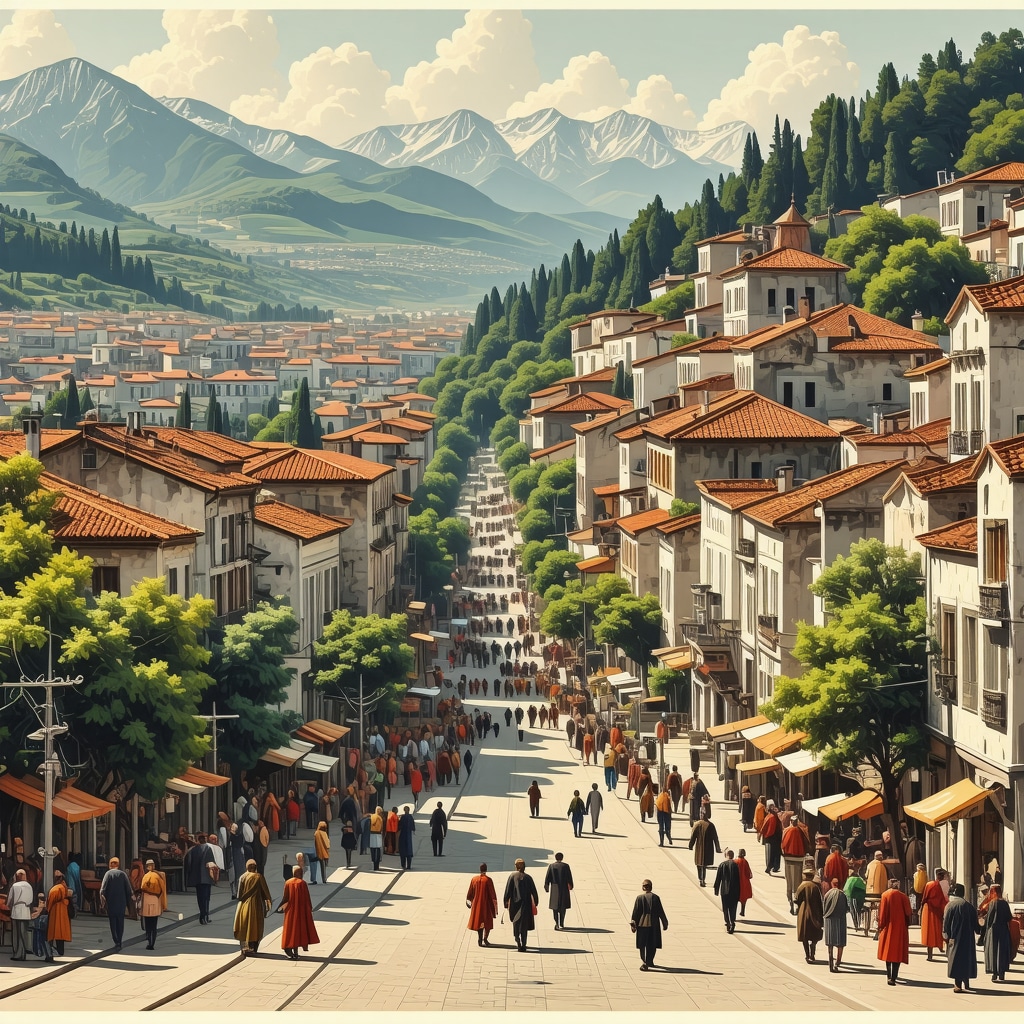Prishtina: Kryeqyteti që Nuk Flet Thjesht Me Fjalë, Por Me Historinë, Kulturën dhe Modernitetin e Vetë
Kur mendoj për Prishtinën, mendja më shkon drejt një qyteti që është si një libër i hapur, plot me histori të bukura, tradita të pasura dhe një energji të papërmbajtshme të të rinjve. A jeni kurioz të dini pse ky qytet është më shumë se thjesht kryeqytet i Kosovës? Le të zbulojmë së bashku disa sekrete të tij të fshehura nën sipërfaqe.
Histori që Luan me Modernitetin: Si U Ndërtua Prishtina?
Prishtina është një qytet që rrjedh nga një histori e lashtë, e mbushur me periudha të ndryshme pushtimi dhe zhvillimi. Nga periudha romake deri të kohët moderne, çdo gur i saj tregon një histori të veçantë. Për shembull, vendi ku ndodhet sot qendra e qytetit është ndërtuar mbi themelet e periudhës osmane, dhe çdo rrugë mban gjurmët e lashtësisë së saj. Për më shumë rreth rrënjëve të saj historike, mund të lexoni në këtë udhezues të shkëlqyeshëm për histori të Ballkanit.
Çfarë e Bën Kulturën e Prishtinës të Paharrueshme?
Kultura është zemra e qytetit. Nga festivalet tradicionale deri te artet bashkëkohore, Prishtina është një skenë që nuk ndalon së frymëzuari. Këtu, sheshi i qytetit është si një skenë e hapur ku ndodhin ngjarje të ndryshme, nga koncertet deri te ekspozitat artistike. Dhe a jeni ndjerë ndonjëherë të magjepsur nga gatimet lokale që shërbejnë në tregjet e qytetit? Këto janë thesar të paçmuar që ndërlidhen me traditat e ndryshme kulturore të popullit kosovar.
Çfarë Bëhet Kur Moderniteti Takon Traditën?
Prishtina është një qytet që nuk e harron rrënjën e saj, por gjithashtu nuk frikësohet të përqafojë të ardhmen. Qyteti është duke ndërtuar një peizazh të ri me ndërtesa moderne, ndërsa në të njëjtën kohë ruan bukurinë e objekteve të vjetra historike. Kjo përzierje e së shkuarës dhe së ardhmes e bën Prishtinën një destinacion të papërsëritshëm për ata që duan të ndjejnë atmosferën unikale të një qyteti që është në zhvillim të vazhdueshëm.
Pse Prishtina është thjesht një qytet, apo më shumë se kaq?
Në fund të ditës, Prishtina është më shumë se thjesht një vend në hartë. Ajo është një përvojë, një histori e gjallë që flet me anë të çdo ndertese, çdo rrugice dhe çdo njeri që e kalon atë. Ju ftoj të ndani mendimet tuaja në komentet poshtë, sepse çdo qytet ka një histori të veçantë, por vetëm ata që e duan atë e kuptojnë vërtetë.
Nëse jeni të interesuar në më shumë udhëzues për destinacione të tjera të jashtëzakonshme në Ballkan dhe më gjerë, mos hezitoni të shikoni katalogun tonë të destinacioneve turistike.
Prishtina: The Vibrant Crossroads of History and Contemporary Life
As we delve deeper into the soul of Prishtina, it becomes evident that this city is a living mosaic where history intertwines seamlessly with modernity. Every corner reveals stories of resilience, creativity, and a relentless pursuit of progress. From the bustling streets filled with youthful energy to the quiet alleys holding centuries-old secrets, Prishtina stands as a testament to the enduring spirit of Kosovo.
Unveiling the Layers of Prishtina’s Cultural Identity
What truly makes Prishtina unforgettable is its vibrant cultural tapestry. Traditional music, dance, and cuisine thrive alongside contemporary art galleries and innovative startups. The city’s festivals, such as the Prishtina International Film Festival, attract visitors from all over, showcasing its dynamic arts scene. These cultural expressions are not just entertainment; they are a reflection of the city’s quest to define its identity in a rapidly changing world. For a comprehensive understanding of the region’s cultural richness, explore the cultural and historical heritage of the Balkans.
How Does Prishtina Balance Tradition and Innovation?
In an era where urban landscapes are often dominated by glass and steel, Prishtina manages to preserve its historical charm while embracing the future. Iconic Ottoman-era structures sit alongside sleek new buildings, creating a cityscape that is as eclectic as it is inspiring. This balance is not accidental; it is a deliberate effort by city planners and citizens alike to honor the past while paving the way for the future. Such a harmonious coexistence encourages sustainable development and cultural continuity. For insights into how cities like Prishtina can thrive through smart urban planning, check out the European guide to sustainable urban development.
What lessons can other cities learn from Prishtina’s journey of cultural and urban transformation?
Prishtina’s story offers valuable lessons on integrating cultural heritage into modern growth strategies, fostering community engagement, and promoting innovation without sacrificing authenticity. As more cities seek to reinvent themselves, understanding how Prishtina navigates these challenges can serve as an inspiring blueprint. Do you think other emerging cities can replicate this model of harmonious development? Share your thoughts below or suggest more reading materials on urban evolution in the Balkans. Remember, exploring destinations like Prishtina not only enriches our travel experiences but also deepens our appreciation for the resilience and creativity of its people. Discover more about the region’s hidden gems and cultural sites at destination guides.
Innovative Urban Planning: Lessons from Prishtina’s Harmonious Growth
In the quest to foster sustainable and culturally rich urban environments, Prishtina exemplifies how strategic urban planning can preserve historical identity while embracing modernity. City planners have adopted an integrated approach, blending heritage conservation with cutting-edge infrastructure development. For instance, the revitalization of Ottoman-era structures, such as the Imperial Mosque, has been complemented by the construction of eco-friendly, mixed-use developments that serve both residents and tourists. This deliberate balance is rooted in comprehensive urban policies that prioritize community input, environmental sustainability, and cultural continuity. According to the Urban Observatory’s report on Prishtina, such practices have resulted in a resilient cityscape that adapts to demographic shifts and economic demands.
Furthermore, innovative transport solutions like expanded cycling lanes and electric bus networks have reduced the city’s carbon footprint, aligning with global sustainability standards. These initiatives are not merely infrastructural; they reinforce a narrative of a city committed to future generations without sacrificing its historical soul.
What Strategies Enable Prishtina to Sustain Its Cultural Heritage Amid Rapid Urbanization?
Prishtina’s success lies in its participatory planning processes, where local communities and cultural stakeholders actively shape development projects. The city’s heritage preservation programs integrate digital documentation, ensuring that even as physical structures evolve, their stories remain accessible. Additionally, adaptive reuse projects—transforming old buildings into modern art galleries or community centers—serve as living embodiments of cultural resilience. Such strategies foster civic pride and tourism while maintaining an authentic sense of place. For insights into replicable models of heritage integration, consult the Cultural Heritage Alliance’s case studies.
Interested in how other emerging cities can emulate Prishtina’s model? Engage with our expert webinars or explore case-specific consultancies specializing in cultural urbanism. Share your perspectives in the comments—your insights could inspire the next wave of sustainable, culturally vibrant urban transformation.

Unearthing Prishtina’s Hidden Layers: How Cultural Heritage and Modern Urban Planning Coalesce
Prishtina exemplifies a city where layered histories serve as a foundation for contemporary urban development. The strategic integration of heritage conservation with cutting-edge infrastructure projects demonstrates a deliberate effort to foster a resilient, culturally rich environment. For instance, adaptive reuse initiatives, transforming Ottoman-era buildings into vibrant art centers, not only preserve the city’s historical identity but also invigorate local communities. Such projects exemplify best practices outlined by the Urban Observatory’s report on sustainable urbanism, emphasizing participatory planning and environmental sustainability.
Moreover, the success of these efforts depends heavily on digital heritage documentation, which ensures that even as physical spaces evolve, their stories remain accessible and celebrated. This digital approach facilitates civic engagement and fosters a collective sense of ownership among residents and stakeholders. Implementing innovative urban design that respects tradition while embracing modernity creates a cityscape that is both authentic and future-ready.
How Do Local Policies Foster a Sustainable Cultural Ecosystem in Prishtina?
Prishtina’s policymakers have adopted a multifaceted strategy to sustain its cultural ecosystem amid rapid urbanization. This includes incentivizing heritage preservation through grants and tax benefits, promoting cultural festivals that attract international visitors, and supporting local artisans and entrepreneurs. The city’s commitment to fostering a vibrant cultural scene is evident in initiatives like the revitalization of historic landmarks into contemporary venues, which serve dual roles as tourist attractions and community hubs.
Furthermore, digital platforms have been leveraged to showcase the city’s cultural assets globally, enhancing visibility and engagement. Such comprehensive strategies not only safeguard the city’s unique identity but also stimulate economic growth through cultural tourism. For insights into replicable models of urban-cultural synergy, explore the Cultural Heritage Alliance’s case studies.
What Innovative Approaches Are Pioneering Sustainable Urban Mobility in Prishtina?
Prishtina’s urban mobility initiatives prioritize eco-friendly and inclusive transportation solutions. The city has expanded cycling infrastructure, introduced electric bus fleets, and implemented smart traffic management systems to reduce congestion and emissions. These measures align with global standards for sustainable urban transport, exemplified by cities like Copenhagen and Amsterdam. The integration of digital ticketing and real-time transit updates enhances user experience and promotes public transit usage, ultimately reducing reliance on private vehicles.
Such innovations are complemented by pedestrian-friendly urban design, creating accessible and safe environments for residents and visitors alike. The ongoing development of green corridors and parkways further enhances ecological connectivity and urban livability. For a comprehensive overview of sustainable urban mobility strategies, see the Urban Observatory’s report on Prishtina.
Interested in how other Balkan cities are adopting similar strategies? Share your thoughts below or delve into detailed case studies at our destination guides. Together, we can envision urban futures that honor heritage while embracing sustainability and innovation.
Expert Insights & Advanced Considerations
1. Integrating Heritage with Modern Urbanism
Urban planners and cultural preservationists emphasize the importance of adaptive reuse of historical structures to foster sustainable development. Prishtina’s successful blending of Ottoman-era architecture with contemporary design serves as a benchmark for cities seeking to preserve identity while embracing innovation.
2. Digital Heritage Documentation
Implementing digital archiving techniques ensures that the stories behind historic sites remain accessible, facilitating civic engagement and educational initiatives. This approach enhances the city’s cultural resilience amidst rapid urbanization.
3. Sustainable Mobility as a Cultural Catalyst
Smart transportation solutions, such as electric buses and expanded cycling lanes, not only reduce carbon footprints but also promote a culture of sustainability, aligning with global urban development standards.
4. Community-Driven Urban Policies
Active participation of local communities in planning processes leads to more culturally sensitive and accepted urban transformations, strengthening social cohesion and civic pride.
5. Economic Impact of Cultural Tourism
Investments in cultural festivals and heritage sites stimulate economic growth, positioning Prishtina as a regional hub for cultural tourism and innovation.
Curated Expert Resources
- Urban Observatory’s Report on Prishtina: Offers comprehensive insights into sustainable urban strategies and infrastructure projects, serving as a vital resource for urbanists and policymakers.
- European Guide to Sustainable Urban Development: Provides best practices on integrating heritage conservation with urban expansion, relevant for city planners globally.
- Cultural Heritage Alliance’s Case Studies: Showcases successful heritage preservation models that balance authenticity with modernization, inspiring adaptive strategies.
- Regional Cultural and Historical Guides: Enrich understanding of Balkan cultural diversity, supporting deeper contextual planning and community engagement.
Final Expert Perspective
Prishtina exemplifies a city where cultural heritage and modern urban development are not mutually exclusive but mutually reinforcing. The key to its success lies in strategic planning that honors the past while innovating for the future. As experts, we recognize that fostering such a balanced approach requires continuous dialogue, digital integration, and community involvement. I invite all professionals and enthusiasts to explore these insights further and share your own experiences or strategies for cultivating resilient, culturally rich cities in the Balkans and beyond. Discover more about regional urban transformations at European urban development guides.”}]}#END#}}}#system eriwa Assistant {

